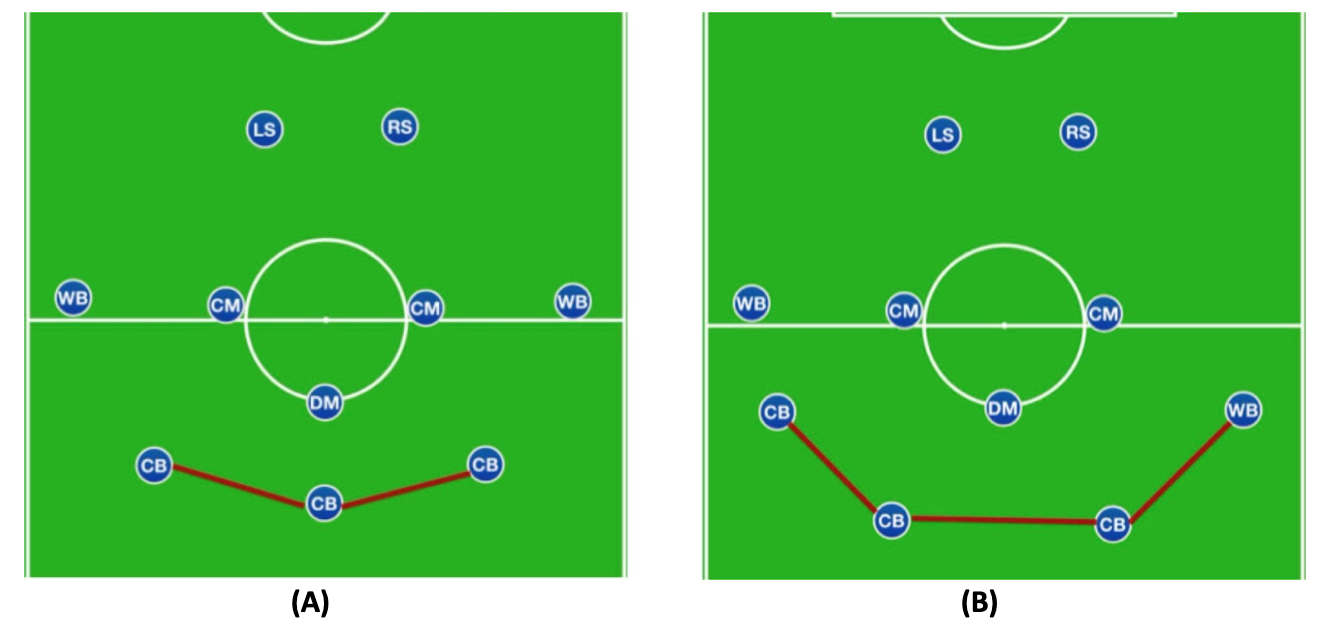Physiocrat
Has No Mates
- Joined
- Jun 29, 2010
- Messages
- 9,568
Brain picking time. What is the point of a 352/532/343 in the defensive phase in the modern game? I just can't see the point.
If the wing-backs stay high and make it a 3 at the back then 4 in midfield there is lots of space behind the back 3. Against a 442 it isn't as much of a problem as the wingers will tend to be deeper but against a 433 there's lots of space.
If you go 5 at the back you then have 3 in midfield but they have to constantly shuffle from side to side at lot which opens up space. Clearly in a midfield 2 in a 343 this is even worse.
The only option then is to make it a 541 out of possession with the LW and RW coming into midfield. The problem with this is isolating the striker making it difficult to attack.
Supposing you had the following side:
..................Pele......MVB........................
........................Kopa..................................
Marcelo..Voronin.....Bastian..Dani Alves...
...........Maldini....Baresi...Thuram.............
.......................Neuer....................................
Wouldn't it make more sense to take this shape in the defensive phase?
................................MvB.......................
...................Pele....................................
Marcelo..Voronin......Bastian......Kopa
Maldini...Baresi.......Thuram....Dani Alves
..........................Neuer...............................
Then in the offensive phase become more of a 325 which is what a 352 becomes when you have a lot of possession.
The only advantage to setting up as 352 in the defensive phase seems to be to keep your best passer (the 10 typically) in the middle to provide excellent transitions (Platini did this IIRC). You do though seem to defensive solidity.
I had thought this for a while but watching Utd vs Chelsea where Chelsea's midfield 2 with a back 3 was dominated before switching to a 442 diamond.
If the wing-backs stay high and make it a 3 at the back then 4 in midfield there is lots of space behind the back 3. Against a 442 it isn't as much of a problem as the wingers will tend to be deeper but against a 433 there's lots of space.
If you go 5 at the back you then have 3 in midfield but they have to constantly shuffle from side to side at lot which opens up space. Clearly in a midfield 2 in a 343 this is even worse.
The only option then is to make it a 541 out of possession with the LW and RW coming into midfield. The problem with this is isolating the striker making it difficult to attack.
Supposing you had the following side:
..................Pele......MVB........................
........................Kopa..................................
Marcelo..Voronin.....Bastian..Dani Alves...
...........Maldini....Baresi...Thuram.............
.......................Neuer....................................
Wouldn't it make more sense to take this shape in the defensive phase?
................................MvB.......................
...................Pele....................................
Marcelo..Voronin......Bastian......Kopa
Maldini...Baresi.......Thuram....Dani Alves
..........................Neuer...............................
Then in the offensive phase become more of a 325 which is what a 352 becomes when you have a lot of possession.
The only advantage to setting up as 352 in the defensive phase seems to be to keep your best passer (the 10 typically) in the middle to provide excellent transitions (Platini did this IIRC). You do though seem to defensive solidity.
I had thought this for a while but watching Utd vs Chelsea where Chelsea's midfield 2 with a back 3 was dominated before switching to a 442 diamond.


